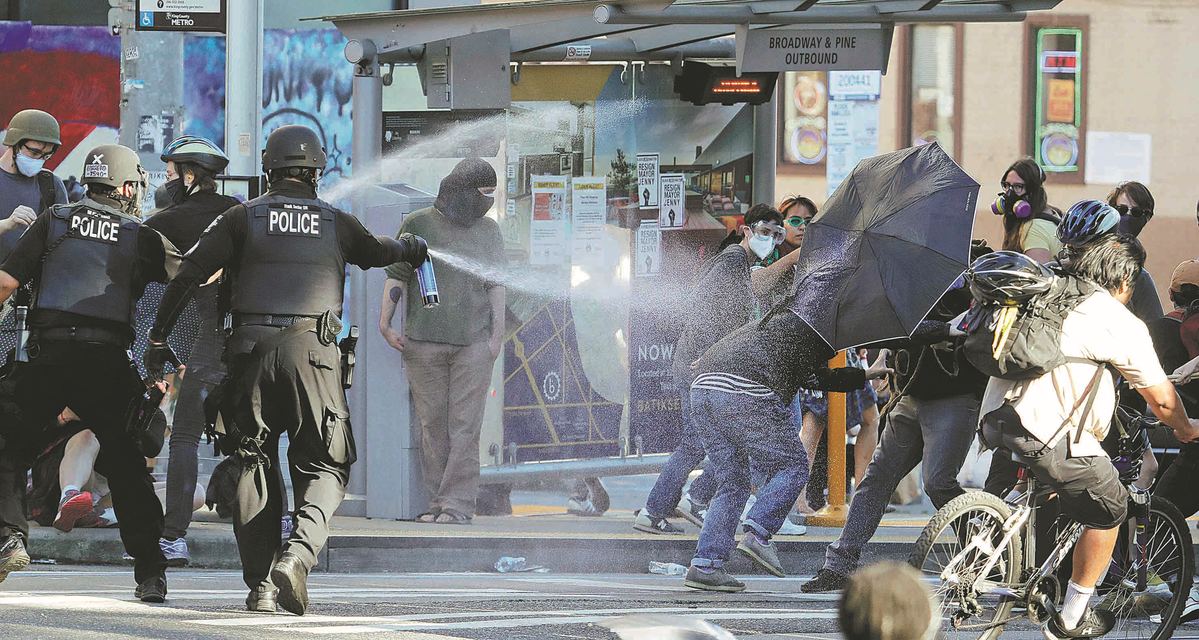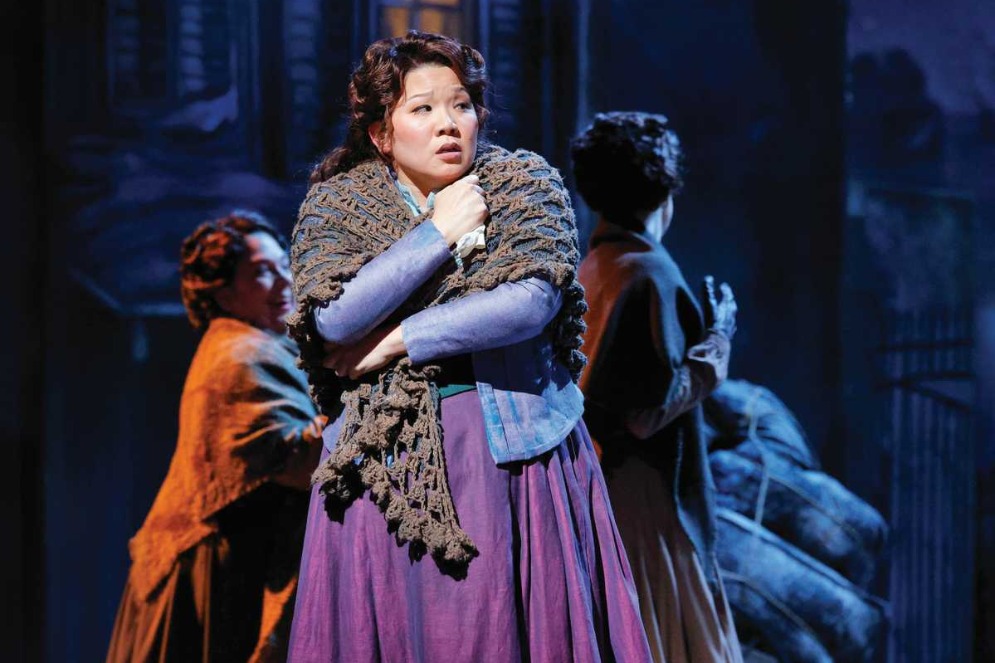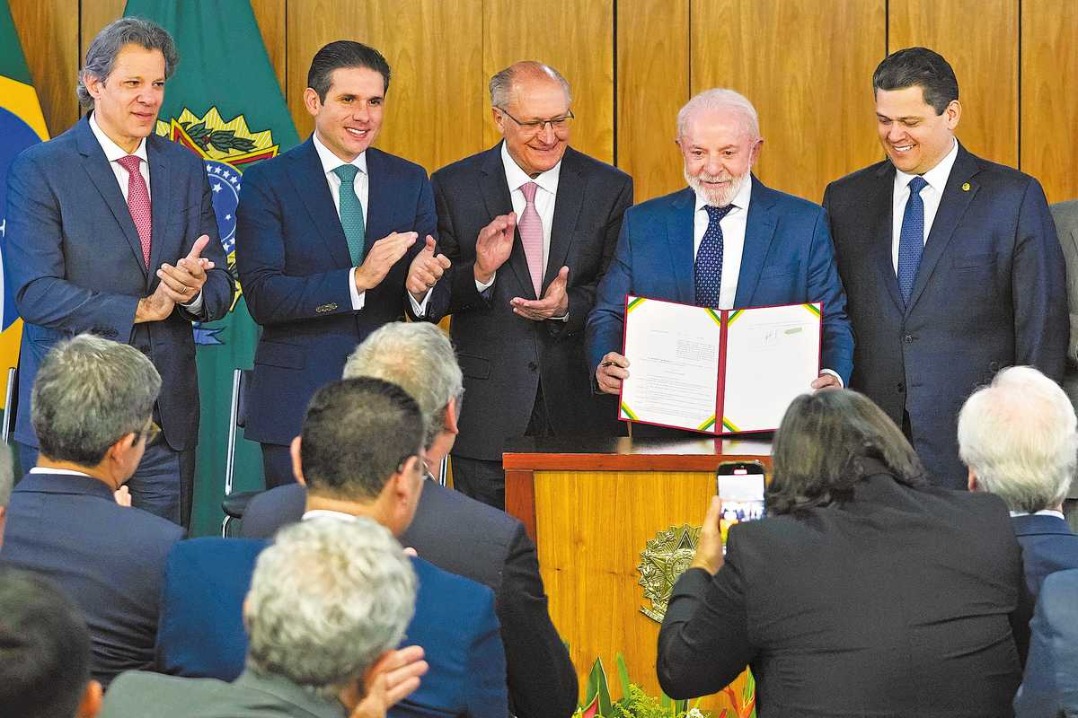US grapples with long history of racial trauma

Editor's note: This is the second story in a three-part series on race issues in the US. From the Tulsa massacre in 1921 and the death of Vincent Chin in 1982, to the murder of George Floyd at the hands of Minneapolis police in 2020 and the recent mass shooting in Buffalo, New York, racial minorities have long been victims of hate crimes.

Black community leaders say long-standing prejudices, misinformation on 'reverse discrimination' fuel hatred, violence
"I can't breathe. … Everything hurts. Mama! Mama!"
Those were the final words of George Floyd, 46, as he lay facedown, handcuffed, his neck pinned under the knee of Derek Chauvin, at an intersection in Minneapolis, Minnesota, on May 25, 2020. As horrified bystanders looked on, it took nine minutes, and 29 seconds for the white police officer to end the life of this large black man, who had allegedly used a counterfeit $20 bill in a grocery store.
Two years later, on May 14, Payton Gendron, 18, a white man, drove more than three hours to mount an armed assault on a supermarket in a predominantly black neighborhood of Buffalo, New York. Within six minutes he had shot dead 10 people, all black.
Falling between these two killings, on May 31 last year, black residents of Tulsa, Oklahoma, commemorated the centennial of the race massacre that occurred there in 1921, when a white mob burned down the city's Greenwood district-then the United States' most prosperous black community-and killed almost 300 people in an ordeal that lasted 16 hours.
"The death of George Floyd and the shooting in Buffalo are just terrible reminders of what has happened and is still happening today," said Kevin Matthews, one of only two black senators in the Oklahoma state senate.
"When George Floyd died, we (in Tulsa) recognized it instantly for what it is. Tulsa was the place where Terence Crutcher was shot in the back walking away from Betty Shelby, where Eric Harris was killed on the ground with his hands cuffed behind his back," Matthews said, referring to black men killed by white police officers, in 2016 and 2015 respectively.
"'We are not going to take it anymore' was how black Tulsans felt upon the death of Floyd. We were united by pain and felt more energized than we had ever been since the Civil Rights Movement."
Indeed, at a time when "the killings of black people had become almost banal in their incessancy and redundancy", to quote The New York Times, Floyd's death-recorded by bystander Darnella Frazier, 17, on her cellphone camera-brought the US to what many believed was an inflection point, where a deep, long-overdue "racial reckoning" was possible.
It also took to unprecedented heights the Black Lives Matter movement, launched in 2013 upon the acquittal of George Zimmerman over the shooting death of African American teenager Trayvon Martin. The slogan Black Lives Matter was written in large block letters on streets nationwide, and one in the District of Columbia was so large it was legible on satellite images.
Two years on, much of the commemorative street art produced in the wake of George Floyd's murder has faded or has been entirely removed, including in Tulsa. There have even been counter-movements in the form of "Blue Lives Matter" (referring to police) and "White Lives Matter", the latter being a slogan found on one of the guns used by the killer in Buffalo.
Hannibal Johnson, a lawyer and writer in Tulsa, said he believes such counter-movements are knee-jerk reactions from those adopting a zero-sum perspective.
"The idea is that instead of having a pie that can grow and be divided in a multiplicity of ways, we have a pie that's finite and is diminishing. The scarcity mentality leads to some equating pro-black with anti-white. This misinterpretation of Black Lives Matter led to claims of reverse discrimination (against whites), which has been in existence in American society for a long time."
In 1990, in a reelection campaign advertisement for the late North Carolina senator Jesse Helms against his black Democratic opponent Harvey Gantt, the narrator said, "You needed that job, and you were the best qualified, but they had to give it to a minority because of a racial quota." This year, at a rally a few months before the Buffalo shooting, former US president Donald Trump told supporters that white people were being told to get to the "back of the line" for medical care in New York.
"Remedial measures aimed at achieving equality by addressing the disadvantages the blacks and others have suffered for decades and centuries are framed as reverse discrimination," Johnson said.
The mood has been fermenting amid the country's rapid demographic change, he said. "Today we are pretty regularly reminded that within a couple of decades or so we'll reach that numerical tip-point where people of various ethnicity will outnumber the pure white population. It's a particularly scary thought for any white person brought up to believe that he or she is entitled to rule by birthright."
On early evidence, Gendron, the accused Buffalo killer, appears to have been influenced by this fear. "The great replacement theory is real," he once wrote in an online post. "At the current rate white will be the minority. This is white genocide." In addition, during the rampage, Gendron is said to have aimed his gun at a white person hiding behind a checkout counter but apologized and did not shoot.
"If you examine history," Johnson said, "white supremacy and white victimhood have always been the two sides of a coin. If you believe yourself to be supreme and you are in a community in which other inferior people, the black people, are doing well, then there's a disconnect between your belief and the reality, one that can only be harmonized by making sure that the black community is knocked down a few pegs on the ladder.
"Whenever there's a real or perceived 'transgression' by black folks, the most punitive, destructive force was set in motion to destroy the community."
History revisited
Residents of North Tulsa's Greenwood district felt that destructive force on May 31, 1921. The district, known nationally as Black Wall Street because of the community's wealth, was home to 200 black-owned businesses and many black millionaires. In the massacre, black people were rounded up and placed in internment centers as the white mob, deputized and armed by local law enforcement, shot its way through the neighborhood.
"Post-massacre, several people in leadership positions called what happened a Negro uprising," said Johnson, who last year published the book Black Wall Street 100: An American City Grapples with its Historical Racial Trauma. "In other words, those black people caused this by not knowing their place and becoming too uppity.
"With everything going up in flames, the children and grandchildren of the Tulsa massacre victims grew up in poverty unaware of the dark history."
For Robert Samuels and Toluse Olorunnipa, co-authors of His Name is George Floyd: One Man's Life and the Struggle for Racial Justice, what happened in Tulsa was reflected in the Floyd family's history.
According to their research, George Floyd's great-great-grandfather was born enslaved but received his freedom after the Civil War. Through hard work he was able to amass more than 200 hectares of land in the late 19th century, making him one of the wealthiest black men in North Carolina.
"Unfortunately, Floyd's great-great-grandfather had all his land taken from him through fraudulent tax schemes and unscrupulous business deals by white farmers and white landowners who wanted to take advantage of him," Olorunnipa said in a TV interview. "This was a time of racial terror in the country."
With nothing to inherit, the next couple of generations in the Floyd family worked as struggling sharecroppers. However, the co-author's comparative analysis showed that the family that had owned Floyd's ancestors were able to build, accumulate and pass down their wealth.
When George Floyd was 2, he moved with his mother into a segregation-era housing project in Houston, Texas. Having fallen into disrepair, the area was occupied almost entirely by black families, "a sand trap of poverty … riddled with crime", Olorunnipa said.
Growing up in the predominantly black North Tulsa, Matthews had no idea of the Tulsa massacre until he was 25. "It was not talked about in my family. It was not talked about in my school." Yet the Floyd family's experience of crushing poverty and rampant racism was nothing new to him.
Matthews said he recalled visiting a white neighborhood as a teenager to play football. There he encountered a group of whites who "called me names and threw bottles at me from a truck and chased me home. I was terrified".
On other occasions, Matthews went with family members to the predominantly white South Tulsa, where they were followed in stores by shop assistants who thought they were there to steal. He said that Minnesota governor Tim Walz had called such behavior "small hidden racism", for which the ultimate end "is the ability to believe you can murder a black man in public".
"Two years after George Floyd's death, people lament on dissipated energy and reduced urgency, but how can you have sustained energy or time to fight for a cause if you are trying to feed your children or keep your lights on every day," said Matthews, who has lent his effort to The 100 Black Men of America, an African American-led nonprofit mentoring organization that operates under the motto "What they see is what they'll be". It is eager to show black youths that they can excel in many areas, including but not limited to sports.
Matthews has also opened a school for formerly incarcerated individuals to teach about financial literacy, entrepreneurship and property ownership.

































